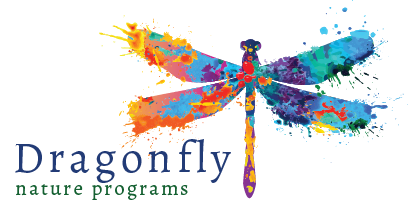“Most scientists today began their careers as children, chasing bugs & snakes, collecting spiders & feeling awe in the presence of nature.”
The screeching started as I motored south in the fast lane on I-5, heading back to California from Portland, Oregon. The sounds were instantly unrecognizable as anything either human or mechanical. They were high-pitched, frantic and fearful.
As these alien sounds grew louder I made eye-contact with my equally puzzled wife, then glanced into the rearview mirror. The 1977 Ford LTD station wagon featured power windows and dual facing rear seats. But the three young ladies aged seven, five, and three were no longer strapped into these seats. They were huddled in the far rear driverside corner whimpering, simpering, whining, and crying. As I signaled, braked, and maneuvered the big blue LTD to a stop in the breakdown lane I monitored the faces in the rearview: three bobbing heads, six tearful eyes, and five pigtails. (One of Rachel’s pigtails always managed to disintegrate into strands. Rubber bands were useless; barrettes ineffectual.)
Risking my life I opened my door on I-5, walked to the rear of the vehicle and swung open the tailgate: “What the !#@&! are you screaming about?” Three shaking little fingers pointed toward a wasp that was crawling along the top of the rear seat. “It’s a wasp,” I said. “Don’t bother them and they won’t bother you.” I rolled up a newspaper and shooed it out a window.
“What if it comes back?” said seven-year-old Danielle.
The fear, and tears, had returned and begun anew. And tears, like cooties, are communicable and soon all three were again crying.
I had to somehow defuse the kids’ hysterical reaction to a single, albeit menacing-looking, insect.
And so, when we got home, the bugwalks began.
It wasn’t anything I consciously planned but on our daily walks around the neighborhood we’d stop by a neighbor’s rose bushes and watch the bees flit and zip from rose to rose. Three-year-old Addy was in a stroller with Rachel and Danielle clinging fearfully to my pantlegs as they watched. Their claws gradually loosened as, day-by-day, we’d stop momentarily by the roses to watch the bees or investigate the ladybugs living in the pampas grass along the creek. We’d watch ants file across the sidewalk. Eventually we progressed to flipping over the occasional rock to discover earwigs and isopoda. Familiarity slowly morphed into fascination. Then wonder and curiosity slowly replaced fear and frenzy. Soon enough these scary creepy-crawlies became part of the daily walks, of our neighborhood, of their lives.
I honestly don’t remember how long before the power of the bugwalk dissipated the fear of bugs but it didn’t take long before searching out and observing these critters became a regular, if not featured, activity on our daily strolls. I didn’t preach or teach, it just happened. And bugwalks have become a family tradition. All the girls have taken their children on leisurely strolls to examine the variety of buzzing and scurrying bugs that are such an intricate and beautiful part of the natural world.
One of them—the one with pigtails constantly askew—has actually turned it into a career.
Rob Loughran began his life as a small child. He is the father of eight grown children, including Rachel Woods of Dragonfly Nature Programs. He is a freelance writer and is offering a free ebook to readers of this month’s blog. Download copies of his science-themed YA novel The Smartest Kid in Petaluma at the following link:

